Guatemala was probably my favourite country in Central America. There’s lots of culture, the climate is pleasant, the food is good and there’s some really cool places to see.
I landed in Guatemala City in October, 2019, and from there I took the shuttle to Antigua where I started my trip. I spent a few days there so I got to explore a bit. I did a walking tour when I was there and learned some of the history of the town.

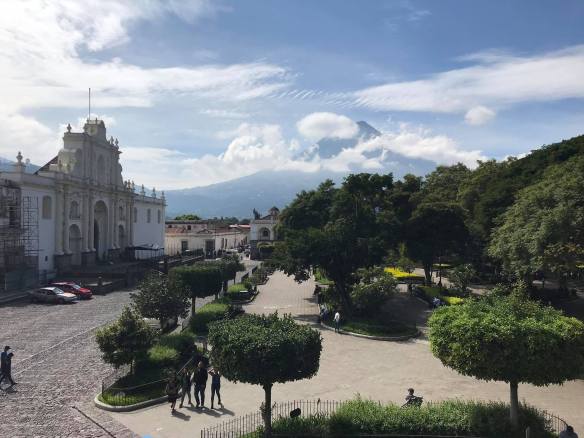
When I was in Antigua I did the popular 2 day hike up Volcan Acatenango. The first day is about 5 hours to get to the base camp where the tents/beds are already set up. It was raining by the time we got there, so we hid out in our rooms for a while until the rain stopped. It eventually cleared and we got a really nice view of the valley and Volcan Fuego, an active volcano that would explode every couple minutes! When it got dark enough you could see the lava clearly in the night. The next day we got up really early (around 4am) and hiked the last 30 minutes to the top in time to see the sunrise. We were very fortunate to have a clear morning so we had a perfect view all around. We then went back to base camp where we had breakfast, and then started our descent down.
Base camp:

Volcan Fuego:

View from the top!

Acatenango was definitely one of the highlights of my trip. From Antigua my next destination was Lake Atitlan. Lake Atitlan is a giant lake with plenty of pueblos (towns) scattered along its shores. I stayed in San Pedro and San Marcos when I was there. San Pedro is a backpacker hotspot with plenty going on- walking down the main street you will be handed a flyer for a show or party going on that night. When I was there I did the (for lack of a better term) ‘Indian nose’ hike, where we got up really early and hiked up one of the small mountains to see the sunrise. I also visited nearby San Juan, which has a big arts community. There’s loads of places selling paintings, textiles and pottery there, and they have some good cafes too. I also went kayaking on the lake once. San Marcos is a different vibe; it’s quieter, and has become a popular spot for hippie expats and yogis around the world. There’s plenty of yoga studios, meditation centres and massage parlours. The hostel I stayed at was right on the lake with a dock so you could go swimming. They also had a yoga studio with glass windows and a view of the lake.
San Pedro:
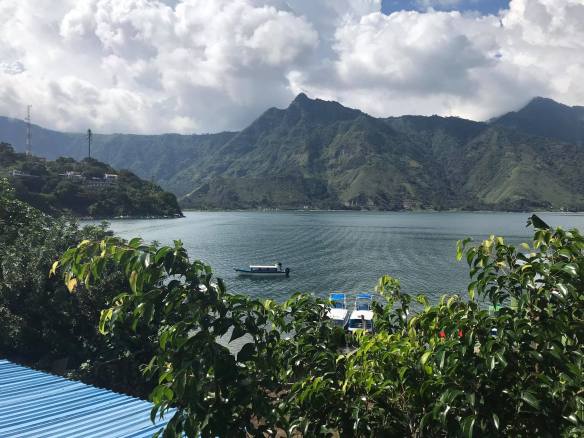
San Marcos:
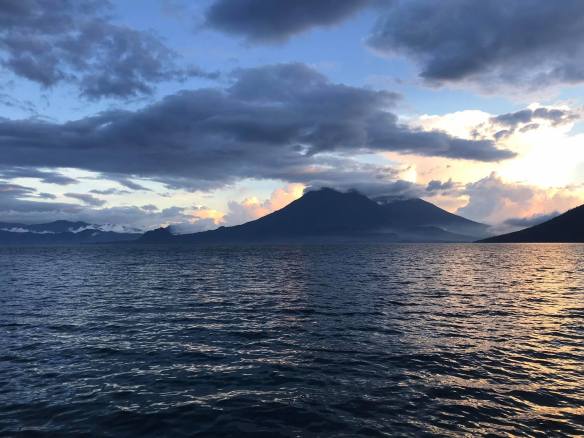
Local ‘tuk-tuk’s’ (taxis), San Pedro:
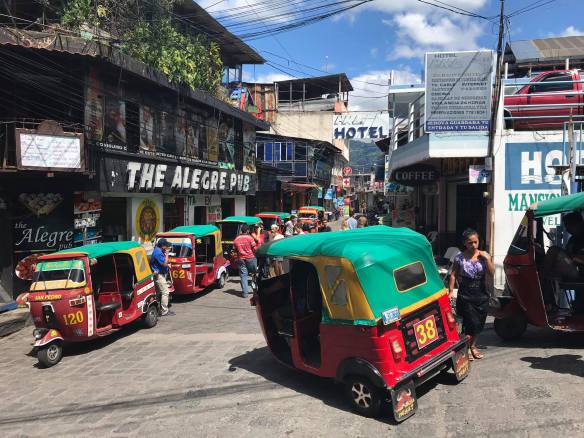
Typical Guatemalan meal:

This is an example of a meal I really like. Especially the tortillas, they are always made fresh in Guatemala. You can buy them right on the street. Unfortunately I didn’t find the food anywhere else as good as Guatemala. It started to be less beans and rice and more meat and fried food. They don’t exactly eat very healthy down there. Avocados were actually pretty uncommon with meals in Central/South America (but you could buy them in stores or on the street). I also didn’t see many tortillas after Guatemala either.
View of San Pedro from the ‘Indian nose’ hike:


After Lake Atitlan my next destination was Semuc Champey. Semuc Champey was beautiful, there’s not really any other way to describe it. It is a protected area with a river and streams going through it and different pools and waterfalls. When I was there I did a tour that involved going into the caves they had in the park. The tour guide gave us all candles and lit them for our light source. In the caves we walked through water, sometimes swimming up to our necks, and made our way up through the caves and over some little waterfalls with the help of ropes and ladders. Then we got to swim and enjoy a couple spots in the park. After that we went tubing down the river back to our hostel. We all linked up for more stability as the rapids were actually pretty big!


View from my hostel (this is where I ate breakfast!)

After Semuc Champey my next destination was Flores. Flores is in the northern region of Guatemala. Most people go to Flores to visit Tikal, probably the most famous Mayan archeological site there is. When I was there I also went to another smaller Mayan site called Yaxha, in addition to Tikal; both were impressive. Our guides were knowledgable and told us a lot about the history of the area. What I found most interesting was only about 5-10% of the pyramids were dug out. They do this to preserve the other pyramids and also because it would just be a lot of work (and very expensive) to dig them all out. The Mayans actually drove themselves to extinction. They cut down all the trees in the area and eventually there was a drought and they all died. There’s probably something we could learn from them…

We got to enjoy the sunset in Tikal and Yaxha from one of the temples.

Fun facts: The temples at Tikal actually appeared in Star Wars Episode 4. Also, the howler monkeys at Yaxha were actually recorded and used for the sound of the dinosaurs in Jurassic Park. If you hear them in real life, you’ll know why.
After Flores I made my way to Livingston on the Caribbean coast. I learned that the Caribbean has a distinct culture, no matter what country you’re in. All of a sudden it’s more people speaking English (with a ‘Jamaican’ accent), you hear Bob Marley music everywhere, there’s more black people and the seafood is very good. It didn’t really feel like I was in Guatemala anymore! When I was there I did some kayaking, hiked to some waterfalls and snorkeling. The town is only accessible by boat from the Rio Dulce. It takes about an hour and a half- an incredible boat ride on the river.


Local tapado dish (seafood soup)- fish, crab, shrimp, plantain and a curry coconut broth.

That’s all for Guatemala. After that I went to Honduras! Stay tuned…
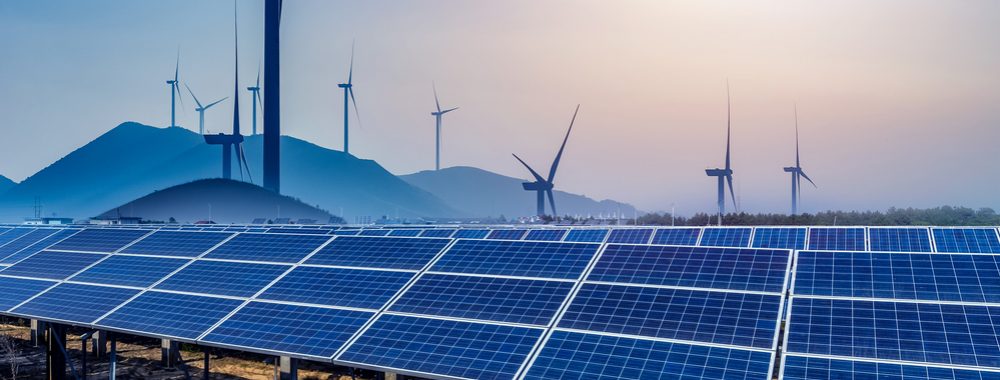
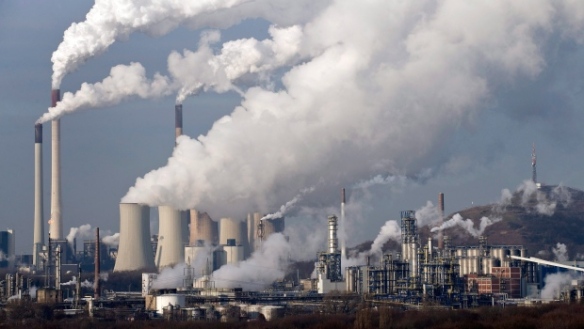


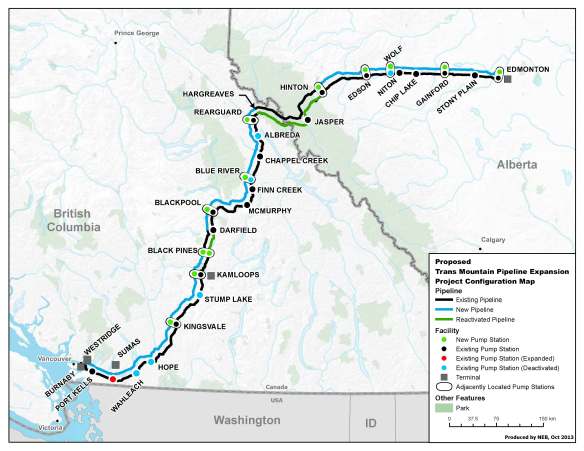

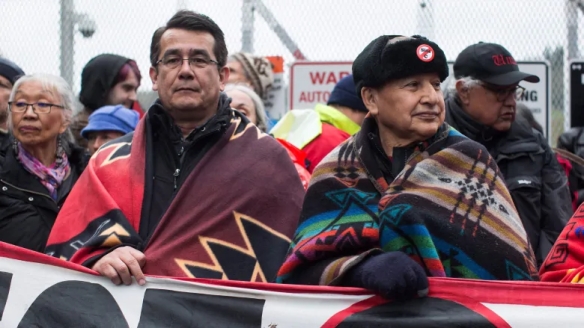
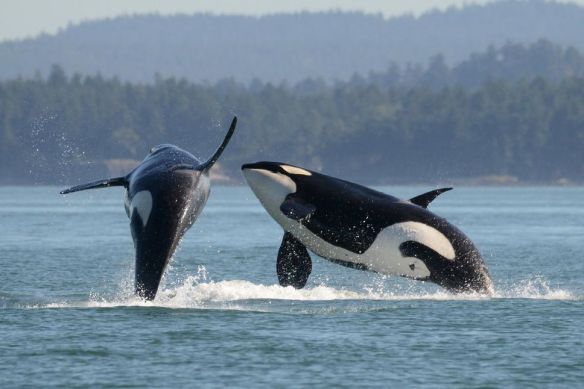

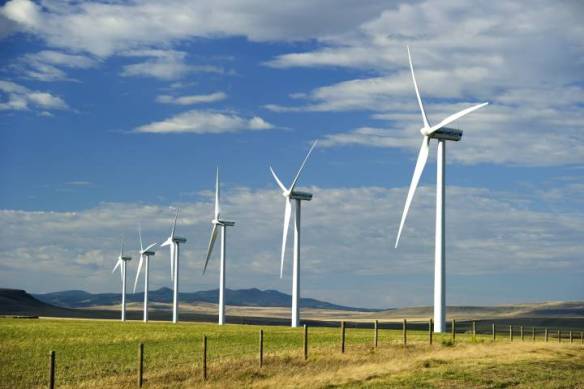

 Activists marching to the Trans Mountain tank farm in Burnaby.
Activists marching to the Trans Mountain tank farm in Burnaby. Posters put up at the tank farm. Photo by Calvin Beauchesne
Posters put up at the tank farm. Photo by Calvin Beauchesne New Zealand has recently
New Zealand has recently 
